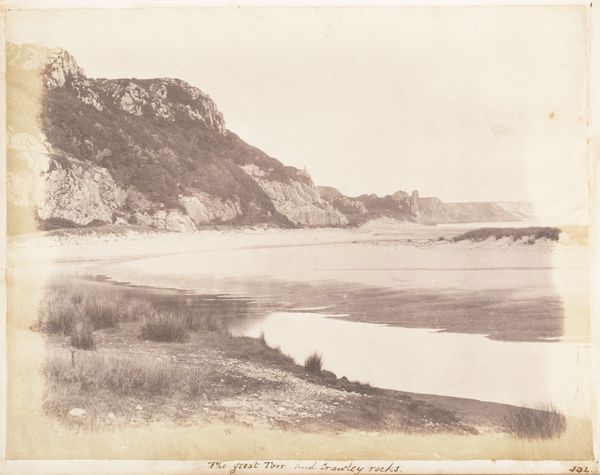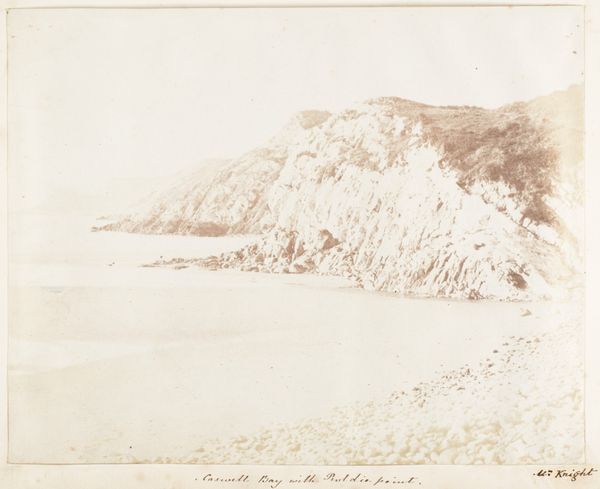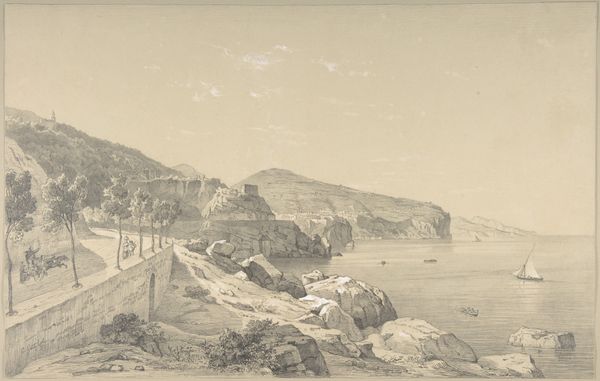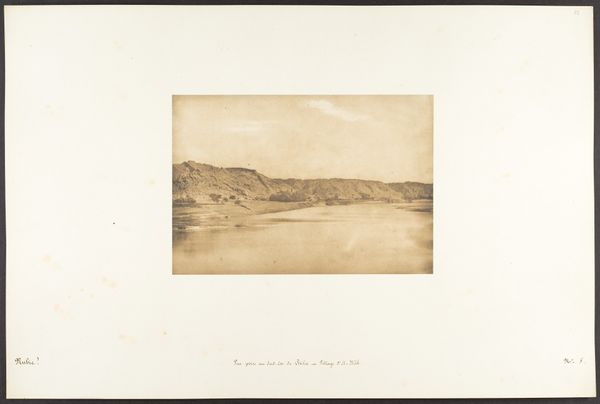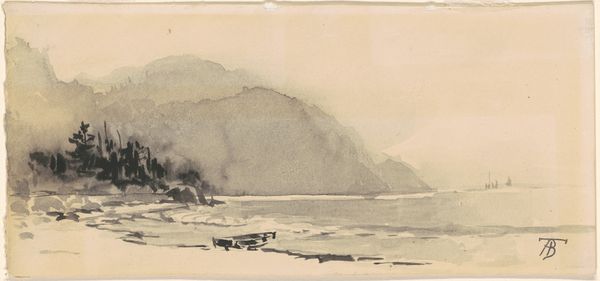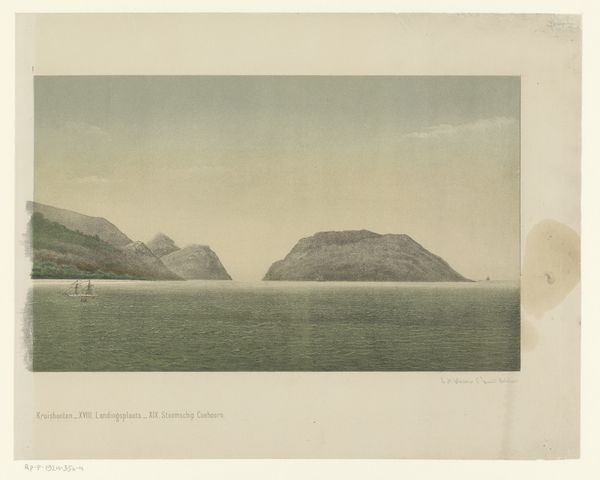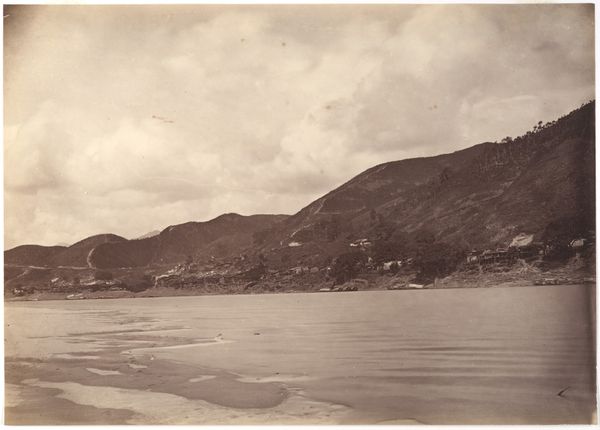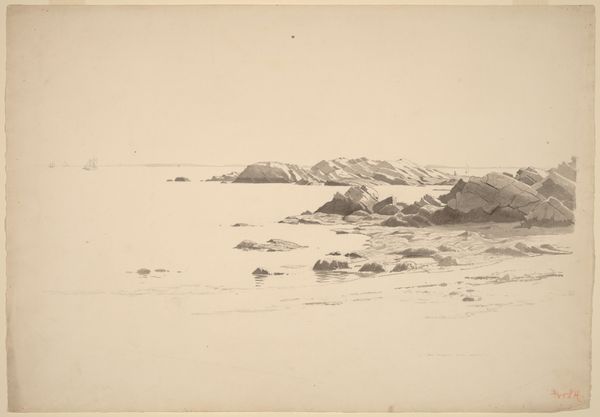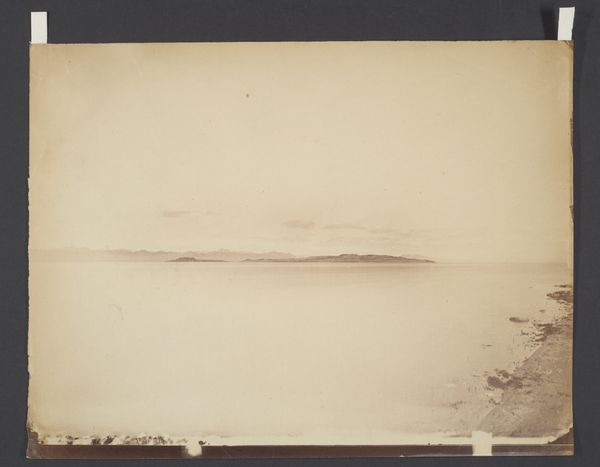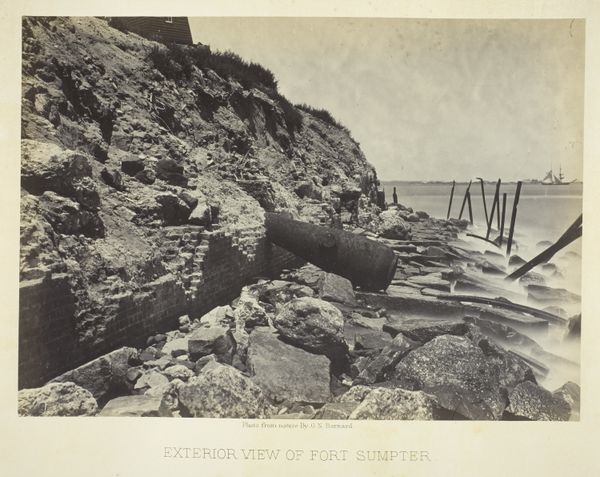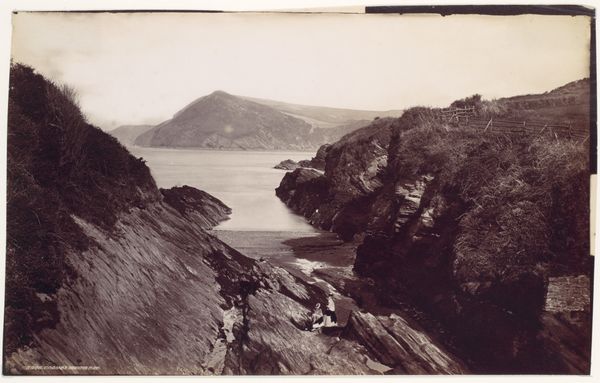
Dimensions: Image: 15.6 × 20.5 cm (6 1/8 × 8 1/16 in.)
Copyright: Public Domain
Curator: Here we have John Dillwyn Llewelyn’s “3 Cliffs Bay with a Wave,” created sometime between 1853 and 1856. It’s a gelatin-silver print. Editor: It's ethereal. Almost dreamlike. The sepia tones lend it such a sense of distance, a bygone era viewed through a soft lens. Curator: The albumen print was a key process in early photography. Llewelyn was one of many experimenting to discover which produced the most clarity in the picture; it really was cutting-edge tech at the time. He even had a darkroom built on his property! That is pure material dedication! Editor: Yes, and Llewelyn's class privilege undoubtedly afforded him the opportunity to devote himself so fully to this relatively new medium. He was also a Member of Parliament—that access informs his gaze. The composition emphasizes the raw power of nature, but also perhaps the dominance of the landscape itself. Curator: I agree. What I also think about is the labour that produced it and its impact. Remember these photographers mixed all the chemicals themselves—highly toxic and very time-consuming. The final print would need meticulous handling too! Editor: Precisely! The dangers inherent in that labor often went unseen and undocumented, mirroring the larger industrial processes of the era and their attendant exploitation. Think about how that exploitation often intersected with gender, class, and race. Curator: You can almost feel that process here though; the tangible object speaks to those processes. Early photography straddled the lines between craft and industry. And, given photography’s proliferation shortly afterwards, can we even call it "art" now? Editor: The choice of this vista, its visual rhetoric, aligns strongly with Romantic sensibilities. The vast ocean, the rugged cliffs...these aren't just picturesque scenes. They embody a sublime confrontation with nature. Llewelyn's photo participates in this specific construction of landscape as something "other," a place to be conquered or admired, usually excluding Indigenous or working class people and stories that would contest this power dynamic. Curator: Very true. But he was very involved in the Photographic Society so there's evidence here of professionalization, trade and standardisation! Editor: Understanding Llewelyn's role within the Victorian class structure gives us crucial insight into the socio-political context informing his work. It adds a richer, deeper layer of meaning to what might appear to be simply a beautiful landscape photograph. Curator: This close consideration provides another, deeper, viewing of “3 Cliffs Bay with a Wave," than previously encountered! Editor: Exactly! Bringing these contextual layers illuminates how seemingly straightforward depictions carry significant ideological weight.
Comments
No comments
Be the first to comment and join the conversation on the ultimate creative platform.
